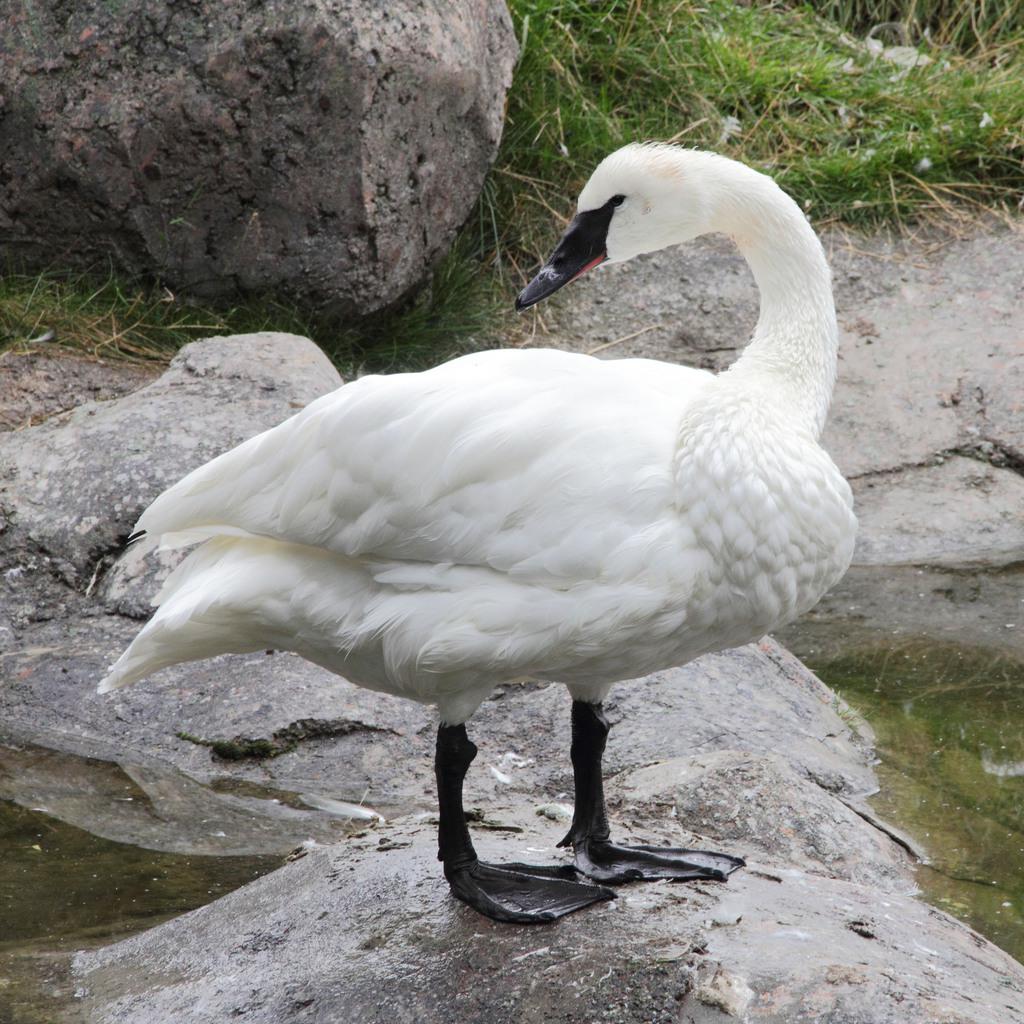Trumpeter Swans are white with a long straight neck, straight black beak, and black legs (young birds are gray). They're North America's largest native waterfowl (4.5-5 ft) with a wingspan of up to 10 ft, weighing more than 25 lbs.
Trumpeter Swans can be found in three different areas: the Pacific coast from Alaska to Oregon; the Rocky Mountains of British Columbia and Alberta, and an interior population in South Dakota, Idaho, Wyoming, Minnesota, Wisconsin, and Michigan. Northern birds move south to ice-free waters in the winter, either along the Pacific coast or in the interior of the United States. Scattered populations can be found year-round in all three areas.
Trumpeter Swans breed in open areas near shallow water (estuaries, lakes, rivers) and nest on small islands or on top of Beaver or Muskrat dams. They forage for aquatic vegetation in shallow water or leftover grain in fields. They loosen underwater roots by pumping their feet up and down to create water currents.
Could it be? Tundra Swans are half the size of Trumpeter Swans and have a high whistling call. Mute Swans have a curved neck and a black knob at the top of their orange bill. Snow Geese are smaller with shorter necks, a pink bill, and black wingtips.
Did you know? Trumpeter Swans incubate their eggs by covering them with their webbed feet.






